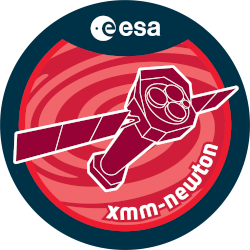

| Proposal ID | 040552 |
| Title | High-accretion rate polars - Caught in the act! |
| Download Data Associated to the proposal | https://nxsa.esac.esa.int/nxsa-sl/servlet/data-action-aio?obsno=0405520301 |
| DOI | https://doi.org/10.5270/esa-qn0zef6 |
| Principal Investigator, PI | Dr Axel Schwope |
| Abstract | The spectral components of polars -- strongly magnetic CVs -- were barelydisentangled by previous X-ray missions. The physics of accretion in a stronglymagnetic, non-relativistic environment is therefore still puzzling. XMM-Newton,in principle, can solve the riddle. Even after 5 years in the mission, it wasimpossible to observe one of the bright, classical polars in a high accretionstate. We propose a triggered observation of such a system. We will investigatethe physics of the hard X-ray emitting shock, the heated accretion pole cap, theatmosphere of the white dwarf, the absorption in the shock and in the flow, thereflection from the white dwarf by phase-resolved CCD- and RGS-spectroscopy andby high-speed OM-photometry. |
| Publications |
|
| Instrument | EMOS1, EMOS2, EPN, OM, RGS1, RGS2 |
| Temporal Coverage | 2007-01-30T11:31:06Z/2007-01-30T23:59:43Z |
| Version | 17.56_20190403_1200 |
| Mission Description | The European Space Agencys (ESA) X-ray Multi-Mirror Mission (XMM-Newton) was launched by an Ariane 504 on December 10th 1999. XMM-Newton is ESAs second cornerstone of the Horizon 2000 Science Programme. It carries 3 high throughput X-ray telescopes with an unprecedented effective area, and an optical monitor, the first flown on a X-ray observatory. The large collecting area and ability to make long uninterrupted exposures provide highly sensitive observations. Since Earths atmosphere blocks out all X-rays, only a telescope in space can detect and study celestial X-ray sources. The XMM-Newton mission is helping scientists to solve a number of cosmic mysteries, ranging from the enigmatic black holes to the origins of the Universe itself. Observing time on XMM-Newton is being made available to the scientific community, applying for observational periods on a competitive basis. |
| Creator Contact | https://www.cosmos.esa.int/web/xmm-newton/xmm-newton-helpdesk |
| Date Published | 2008-03-06T00:00:00Z |
| Last Update | 2025-08-04 |
| Keywords | "XMM", "magnetic cvs", "XMM-Newton", "act !.", "speed om photometry", "classical polars", "xray missions", "xmm newton", "rgs spectroscopy", "spectral components", "phase resolved ccd", "barely disentangled", "white dwarf" |
| Publisher And Registrant | European Space Agency |
| Credit Guidelines | European Space Agency, Dr Axel Schwope, 2008, 'High-accretion rate polars - Caught in the act!', 17.56_20190403_1200, European Space Agency, https://doi.org/10.5270/esa-qn0zef6 |